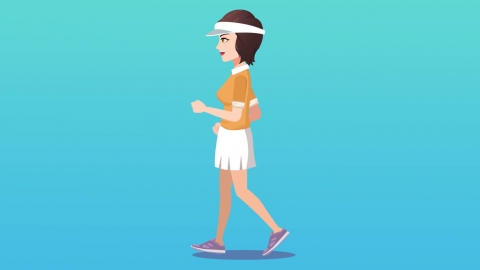Why do women experience hip pain after running?
Generally, the main causes of hip pain in women after running include insufficient warm-up before exercise, improper running posture, hip synovitis, iliotibial band syndrome, and avascular necrosis of the femoral head. If discomfort occurs, it is recommended to seek timely medical evaluation and treatment at a正规 hospital. Detailed explanations are as follows:

1. Insufficient Warm-Up Before Exercise
If the hip muscles and joints are not adequately warmed up before running, the muscles remain stiff and are prone to strain during sudden movement, leading to hip pain. Immediately stop running, gently massage the hip area during rest, and apply local cold compresses to relieve pain. Perform dynamic warm-up exercises before future runs.
2. Improper Running Posture
Excessive forward lean or overly long strides during running can cause uneven stress on the hip joints and excessive friction between joint surfaces, resulting in pain. Adjust your running posture by maintaining an upright body position and moderate stride length. Choose running shoes with good shock absorption and reduce running frequency until the pain subsides.
Repeated friction of the hip joint during running may irritate the synovial membrane, causing inflammation, congestion, and edema, which leads to hip pain accompanied by joint swelling. Under medical guidance, medications such as celecoxib capsules, etoricoxib tablets, or synovitis granules may be taken. Avoid strenuous exercise; in severe cases, surgical removal of the hip synovium may be necessary.
4. Iliotibial Band Syndrome
Repetitive friction between the iliotibial band and the lateral femoral epicondyle during running triggers inflammation, causing pain on the outer side of the hip that worsens after physical activity. Under medical supervision, medications such as diclofenac sodium sustained-release tablets, eperisone hydrochloride tablets, or Huoxue Zhitong capsules may be used. Perform hip stretching exercises and avoid running during painful episodes.
5. Avascular Necrosis of the Femoral Head
Long-term excessive loading from running can impair blood supply to the femoral head, leading to bone cell death, hip pain, and associated lower limb weakness. Under medical guidance, drugs such as alendronate sodium tablets, Xianling Gu Bao capsules, or glucosamine sulfate capsules may be prescribed. In severe cases, total hip arthroplasty may be required. After surgery, weight-bearing activities should be avoided.
In daily life, ensure adequate warm-up before running and choose appropriate footwear and running surfaces. Control running intensity and frequency to prevent overexertion. Regularly check the condition of the hip joints to detect abnormalities early. When hip pain occurs, suspend physical activity and gradually resume training only after full recovery.





